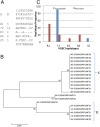Impact of pyrethroid resistance on operational malaria control in Malawi
- PMID: 23118337
- PMCID: PMC3511128
- DOI: 10.1073/pnas.1217229109
Impact of pyrethroid resistance on operational malaria control in Malawi
Abstract
The impact of insecticide resistance on insect-borne disease programs is difficult to quantify. The possibility of eliminating malaria in high-transmission settings is heavily dependent on effective vector control reducing disease transmission rates. Pyrethroids are the dominant insecticides used for malaria control, with few options for their replacement. Their failure will adversely affect our ability to control malaria. Pyrethroid resistance has been selected in Malawi over the last 3 y in the two major malaria vectors Anopheles gambiae and Anopheles funestus, with a higher frequency of resistance in the latter. The resistance in An. funestus is metabolically based and involves the up-regulation of two duplicated P450s. The same genes confer resistance in Mozambican An. funestus, although the levels of up-regulation differ. The selection of resistance over 3 y has not increased malaria transmission, as judged by annual point prevalence surveys in 1- to 4-y-old children. This is true in areas with long-lasting insecticide-treated nets (LLINs) alone or LLINs plus pyrethroid-based insecticide residual spraying (IRS). However, in districts where IRS was scaled up, it did not produce the expected decrease in malaria prevalence. As resistance increases in frequency from this low initial level, there is the potential for vector population numbers to increase with a concomitant negative impact on control efficacy. This should be monitored carefully as part of the operational activities in country.
Conflict of interest statement
The authors declare no conflict of interest.
Figures




References
-
- Ranson H, et al. Pyrethroid resistance in African anopheline mosquitoes: What are the implications for malaria control? Trends Parasitol. 2011;27(2):91–98. - PubMed
-
- Coleman M, Sharp B, Seocharan I, Hemingway J. Developing an evidence-based decision support system for rational insecticide choice in the control of African malaria vectors. J Med Entomol. 2006;43(4):663–668. - PubMed
-
- World Health Organization . Resistance of Vectors of Disease to Pesticides. Technical Report Series 655. Geneva: WHO; 1980. - PubMed
Publication types
MeSH terms
Substances
Associated data
- Actions
- Actions
- Actions
- Actions
- Actions
Grants and funding
LinkOut - more resources
Full Text Sources
Medical
Research Materials

